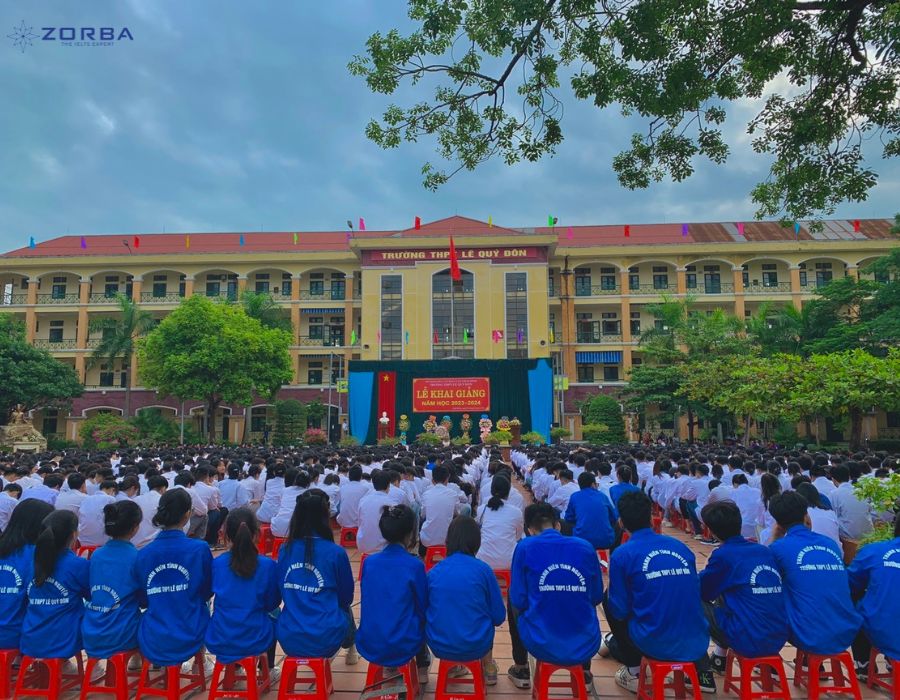
Stepwells
A millennium ago, stepwells were fundamental to life in the driest parts of India. Richard Cox travelled to north-western India to document these spectacular monuments from a bygone era
During the sixth and seventh centuries,the inhabitants of the modern-day Estates of Gujarat and Rajasthan in north-western India developed a method of gaining access to clean, fresh groundwater during the dry season for drinking, bathing, watering animals and irrigation. However, the significance of this invention – the stepwell – goes beyond its utilitarian application.
Unique to this region, stepwells are often architecturally complex and vary widely in size and shape. During their heyday, they were places of gathering, of leisure and relaxation and of worship for villagers of all but the lowest classes. Most stepwells are found dotted round the desert areas of Gujarat (where they are called vav) and Rajasthan (where they are called baori), while a few also survive in Delhi. Some were located in or near villages as public spaces for the community; others were positioned beside roads as resting places for travellers.
As their name suggests, stepwells comprise a series of stone steps descending from ground level to the water source (normally an underground aquifer) as it recedes following the rains. When the water level was high, the user needed only to descend a few steps to reach it; when it was low, several levels would have to be negotiated.
Some wells are vast, open craters with hundreds of steps paving each sloping side, often in tiers. Others are more elaborate, with long stepped passages leading to the water via several storeys. Built from stone and supported by pillars, they also included pavilions that sheltered visitors from the relentless heat. But perhaps the most impressive features are the intricate decorative sculptures that embellish many stepwells, showing activities from fighting and dancing to everyday acts such as women combing their hair or churning butter.
Down the centuries, thousands of wells were constructed throughout northwestern India, but the majority have now fallen into disuse; many are derelict and dry, as groundwater has been diverted for industrial use and the wells no longer reach the water table. Their condition hasn’t been helped by recent dry spells: southern Rajasthan suffered an eight-year drought between 1996 and 2004.
However, some important sites in Gujarat have recently undergone major restoration, and the state government announced in June last year that it plans to restore the stepwells throughout the state.
In Patan, the state’s ancient capital, the stepwell of Rani Ki Vav (Queen’s Stepwell) is perhaps the finest current example. It was built by Queen Udayamati during the late 11th century, but became silted up following a flood during the 13th century. But the Archaeological Survey of India began restoring it in the 1960s, and today it is in pristine condition. At 65 metres long, 20 metres wide and 27 metres deep, Rani Ki Vav features 500 sculptures carved into niches throughout the monument. Incredibly, in January 2001, this ancient structure survived an earthquake that measured 7.6 on the Richter scale.
Another example is the Surya Kund in Modhera, northern Gujarat, next to the Sun Temple, built by King Bhima I in 1026 to honour the sun god Surya. It actually resembles a tank (kund means reservoir or pond) rather than a well, but displays the hallmarks of stepwell architecture, including four sides of steps that descend to the bottom in a stunning geometrical formation. The terraces house 108 small, intricately carved shrines between the sets of steps.
Rajasthan also has a wealth of wells. The ancient city of Bundi, 200 kilometres south of Jaipur, is renowned for its architecture, including its stepwells. One of the larger examples is Raniji Ki Baori, which was built by the queen of the region, Nathavatji, in 1699. At 46 metres deep, 20 metres wide and 40 metres long. the intricately carved monument is one of 21 baoris commissioned in the Bundi area by Nathavatji.
In the old ruined town of Abhaneri, about 95 kilometres east of Jaipur, is Chand Baori, one of India’s oldest and deepest wells; aesthetically it’s perhaps one of the most dramatic. Built in around 850 AD next to the temple of Harshat Mata, the baori comprises hundreds of zigzagging steps that run along three of its sides, steeply descending 11 storeys, resulting in a striking pattern when seen from afar. On the fourth side, verandas which are supported by ornate pillars overlook the steps.
Still in public use is Neemrana Ki Baori, located just off the Jaipur-Delhi highway. Constructed in around 1700, it is nine storeys deep, with the last two being underwater. At ground level, there are 86 colonnaded openings from where the visitor descends 170 steps to the deepest water source.
Today, following years of neglect, many of these monuments to medieval engineering have been saved by the Archaeological Survey of India, which has recognised the importance of preserving them as part of the country’s rich history. Tourists flock to wells in far-flung corners of northwestern India to gaze in wonder at these architectural marvels from hundreds of years ago, which serve as a reminder of both the ingenuity and artistry of ancient civilisations and of the value of water to human existence.
- Giải thích thích từ vựng
- Fundamental (a) /ˌfʌn.dəˈmen.t̬əl/: cơ bản, bản chất, cốt lõi, quan trọng
Eg. We need to make fundamental changes to the way in which we treat our environment.
Fundament (n)
Fundamentally (adv)
- Collocation:
Fundamental to sth:
- 1 Số từ gần nghĩa
- basic: just need some basic information.
- elementary: started an elementary-level art history course.
- fundamental: One of the most fundamental principles of the rule of law is that one person cannot be punished for the actions of another.
- rudimentary: They have only the most rudimentary grasp of the language.
- essential: We have been able to determine the essential nature of a healthy diet.
- underlying: The underlying idea is that having freedom is valuable.
- utilitarian (a) /juːˌtɪl.əˈter.i.ən/: vị lợi, thiết thực
Eg. Like many factories, it’s a very ugly utilitarian building.
-
Utility (n) /ju:’tiliti/: tính thiết thực, tính hữu dụng
-
Collocation: of … ~ This computer is of low utility for the home user.
- Một số từ gần nghĩa
- useful: These useful gadgets should find a home in every kitchen.
- helpful: They gave us some really helpful advice.
- valuable: He was able to provide the police with some valuable information.
- invaluable: The Internet is an invaluable resource for teachers.
- constructive: It was a very constructive discussion.
- heyday (n) /ˈheɪ.deɪ/: Thời hoàng kim
Eg. In their heyday, they sold as many records as all the other groups in the country put together.
- Một số từ gần nghĩa:
- efflorescence
- flower
- peak
- prime (BEST TIME)
- Dot (n): chấm nhỏ
(v): Rải rác, lấm chấm
Eg: We have offices dotted around/all over the region.
The area is dotted with beautiful churches.
- Comprise (v) /kəmˈpraɪz/: bao gồm/ chiếm phần
The course comprises a class book, a practice book, and a CD.
Single women comprise 43% of the US female voting-age population
- Descend /dɪˈsend/ (v) đi xuống/ bắt nguồn từ
He path descended steeply into the valley.
Her father is descended from Greek royalty.
Humans are descended from (= developed from) ape-like creatures
- elaborate (a) /iˈlæb.ɚ.ət: Phức tạp tỉ mỉ
Others are more elaborate, with long stepped passages leading to the water via several storeys.
He came out with such an elaborate excuse that I didn’t quite believe him.
- Pillars (n): /ˈpɪl.ɚ/ trụ cột ( nghĩa đen/ nghĩa bóng)
A row of reinforced concrete pillars supports the bridge.
He’s a pillar of the Dallas business community.
- Shelter (n) /ˈʃel.t̬ɚ/: Nơi trú ẩn, nhà (v) trú ẩn
they also included pavilions that sheltered visitors from the relentless heat
We were caught in a thunderstorm, without anywhere to shelter.
They opened a shelter to provide temporary housing for the city’s homeless.
- embellish (v) /ɪmˈbel.ɪʃ/: trang trí, thêm thắt vào câu truyện
But perhaps the most impressive features are the intricate decorative sculptures that embellish many stepwells, showing activities from fighting and dancing to everyday acts such as women combing their hair or churning butter.
The ceiling was embellished with flowers and leaves.
He sometimes had to embellish the facts in order to, as he saw it, highlight the truth.
- Disuse (n) : Không sử dụng, bỏ hoang
Down the centuries, thousands of wells were constructed throughout northwestern India, but the majority have now fallen into disuse
The church was recently restored after decades of disuse.
- divert (v) /dɪˈvɝːt/: Chuyển hướng ( nghĩa đen/ nghĩa bóng)
As groundwater has been diverted for industrial use and the wells no longer reach the water table.
Our flight had to be diverted to Newark because of the storm
Should more funds/money/resources be diverted from roads into railways?
However, some important sites in Gujarat have recently undergone major restoration, and the state government announced in June last year that it plans to restore the stepwells throughout the state.
- Restore (v) sửa chữa lại, phục hồi lại, xây dựng lại như cũ (toà nhà, bức tranh…)
They want to restore the castle to its former glory.
They’re trying to restore the good name of the manufacturer.
Restoration (n)
The first task following the disaster was the restoration of clean water supplies.
Restoration work on the Sistine Chapel ceiling is now complete.
A large majority of the population is demanding the restoration of the former government.
- Silt
(n) bùn, phù sa
(v): Nghẽn bùn, làm cho bị đầy bùn
became silted up
The harbour silted up many years ago.
- Pristine/prɪˈstiːn/ Ban sơ, tinh khôi, không bị hư hỏng, còn mới nguyên; tươi, sạch sẽ như mới
in pristine condition in pristine condition
Từ gần nghĩa
- new: New cars tend to lose a lot of their value in the first year.
- brand new: The dress is brand new – still has the sales tags on it!
- in pristine condition: The LPs are in pristine condition and still wrapped in plastic.
- in mint condition: That collector has a 1972 Corvette in mint condition.
They are not pristine remnants of a prehistoric era but are artifacts of centuries of forest exploitation by humans.
- resembles /rɪˈzem.bəl/: Mô phỏng/ giống
You resemble your mother very closely.
After the earthquake, the city resembled a battlefield.
Resemblance (n) /rɪˈzem·bləns/
There is a clear resemblance between the two breeds of dogs
- Hallmark (n) /ˈhɔlˌmɑrk/ a typical characteristic or feature of a person or thing:
displays the hallmarks of
Simplicity is a hallmark of this design.
This explosion bears/has all the hallmarks of (= is likely to have been) a terrorist attack.
An independent press is one of the hallmarks of a free society.
- a wealth of: a large amount of something good:
Jim has a wealth of teaching experience.
The website gives a wealth of data on a company’s stock.
He brings a wealth of industry experience to his new position.
- renowned for / renownd/
The region is renowned for its outstanding natural beauty.
Renown (n)
Her renown spread across the country.
Các từ gần nghĩa
- fame: His daring fashions brought him fame in the 1950s.
- celebrity: Those who court celebrity must be prepared to pay the price.
- stardom: He achieved stardom late in life.
- superstardom: The band rose to superstardom in the 1990s.
- renown: She is a violinist of international renown.
- monument (n)
Lăng mộ
Công trình kiến trúc lớn
Công trình lớn, công trình bất hủ (khoa học, (văn học)…)
Parts of the Berlin wall are being allowed to stand as historic monuments
The bridge was protected as a cultural monument in 1999.
- Intricate: ˈɪntrɪkɪt/ rắc rối, phức tạp
intricately carved monument
The watch mechanism is extremely intricate and very difficult to repair.
- commission /kəˈmɪʃən/
– n: tiền hoa hồng,
Is she paid a regular wage or is it on/by commission only?
– nhiệm vụ
She’s just got a commission to paint Sir Ellis Pike’s wife.
– Hội đồng
The government has set up/established a commission to investigate the problem of inner city violence.
(v): Uỷ nhiệm, ủy thác
She’s commissioned an artist to paint her portrait.
- In the old ruined town /ˈruː.ɪn/
Huge modern hotels have ruined this once unspoilt coastline.
The economy was in ruins after the war.
- flock to
(n): Đàn
(v): kéo đàn
A noisy flock of tourists came into the building.
Hundreds of people flocked to the football match.
The number of bird species attending flocks was greater during the dry season, declining thereafter during the breeding season.
- gaze at
(v) Nhìn chằm chằm
He spends hours gazing out of the window when he should be working.
(n): cái nhìn
- lookLook over there! A rainbow!
- watchI sat by the window and watched people walking past.
- glanceShe glanced around the room to see who was there.
- peepShe peeped through the curtains to see what was happening.
- peekHe peeked inside the box.
- stareDon’t stare at people like that – it’s rude.
- marvels (n) /´ma:vəl/: Điều, vật kỳ diệu
Marvellous (a)/´ma:vələs/ : Kỳ diệu
I often marvel that humans can treat each other so badly.
They marvelled at the work that the women of this country were able to turn out.
This miniature phone is the latest technological marvel from Japan.
- ingenuity / ˌɪn.dʒəˈnjuː.ə.ti/: Sự khóe léo, có kỹ năng
Ingenious (a) /in´dʒi:niəs/ khéo léo
Ingenuous (a) /in´dʒenjuəs/: chân thật, ngô nghê
I was impressed by the ingenuity and energy of the contestants.
- Luyện tập Chọn đáp án đúng điền vào chỗ trống
- It’s one of the ………………differences between men and women. A. fundamental B. Ingenious
- The classis………… mainlyof Italian and French students. A.comprised B. descended
- Jane…………… the stairsslowly in her wedding gown A. descended B comprised
- They’re making the most ………………preparations for the wedding. A. beautiful B. elaborate
- The whale, like the dolphin, has become a symbol of the ……………..of creation. A. marvels B. preparations
- It took some timeand a little………………., but we were ableto rescue the animals. A. Creation B. ingenuity
- Government-sponsored health insurance is a central ……………. of the modern welfare state. A. pillar B. street
- A group of us were sheltering …………..the rain under the trees. A. from B. of
- He couldn’t resist…………… the storyof his accident a little. A. covering B. embellishing
- Approximately half of the flats there had fallen …………..disuse by the mid 1980s. A. at B. into
- Traffic will be …………through the sidestreetswhile the main road is resurfaced. A. changed B. diverted
- The government is trying to ………..public confidence in its management of the economy. A.restore B. store
- The soil texture is 46 % sand, 46 % clay and 8 % ……….. A. silt B. silty
- Washing machinefor sale– only two months old and ……… pristine condition. A. on B. in
- All happyfamilies ………….one another.
- resemble B. Assemble
- We have a systemof openjustice in this country that we believe to be one of the ……….of a democratic society. A. hallmarks B. stonemark
- The author is very knowledgeable and provides a ……… of data about present language practices.wealth B. Rich
- He is bestknown for his work on keyholesurgery and also …………….in the field of robotics. A. renowned B. renown
- The researchundertakenin the past five years has revolutionised our understanding of the ancient…………….. A. monument B. monuiment
- Policeofficersuncovered an…………. web of deceit. A. intricate B. intrecate
- Using this principle would result in treatment of comparatively fewer patients than using a straightforward………… principle. A. utiliatarian B. utilitarian
- Even in their ………. people sometimes winked and leered at their seemingly retrograde approaches to life. A. heyday B. primeday
- My experimenthas revealedhow we fail to connect the …….between the way we live today and the needs of tomorrow. A. dots B. pots
- She gets a 15 percent………….. on every machineshe sells. A. commission B. emmission
- Her injury………… her chancesof winning the race. A. broke B. ruined
- Crowds of people……… to seethe Picasso exhibition. A. flocked B. glocked
- The man fixed his interrogatorwith a steady ………and spokequietly but firmly. A. gaze B. gazed
- Tourists ……..at the panoramicview. A. marvell B. marvel
- She devisedan……….. solutionto the problem. A. ingenious B. ingenuous
- LUYỆN TẬP
- A 2. A 3. A 4. B 5. A
- B 7. A 8. A 9. B 10. B
- B 12. A 13.A 14. B 15.A
- A 17. A 18. A 19. A 20. A
- B 22. A 23. A 24. A 25. B
- A 27. A 28. B 29. B













